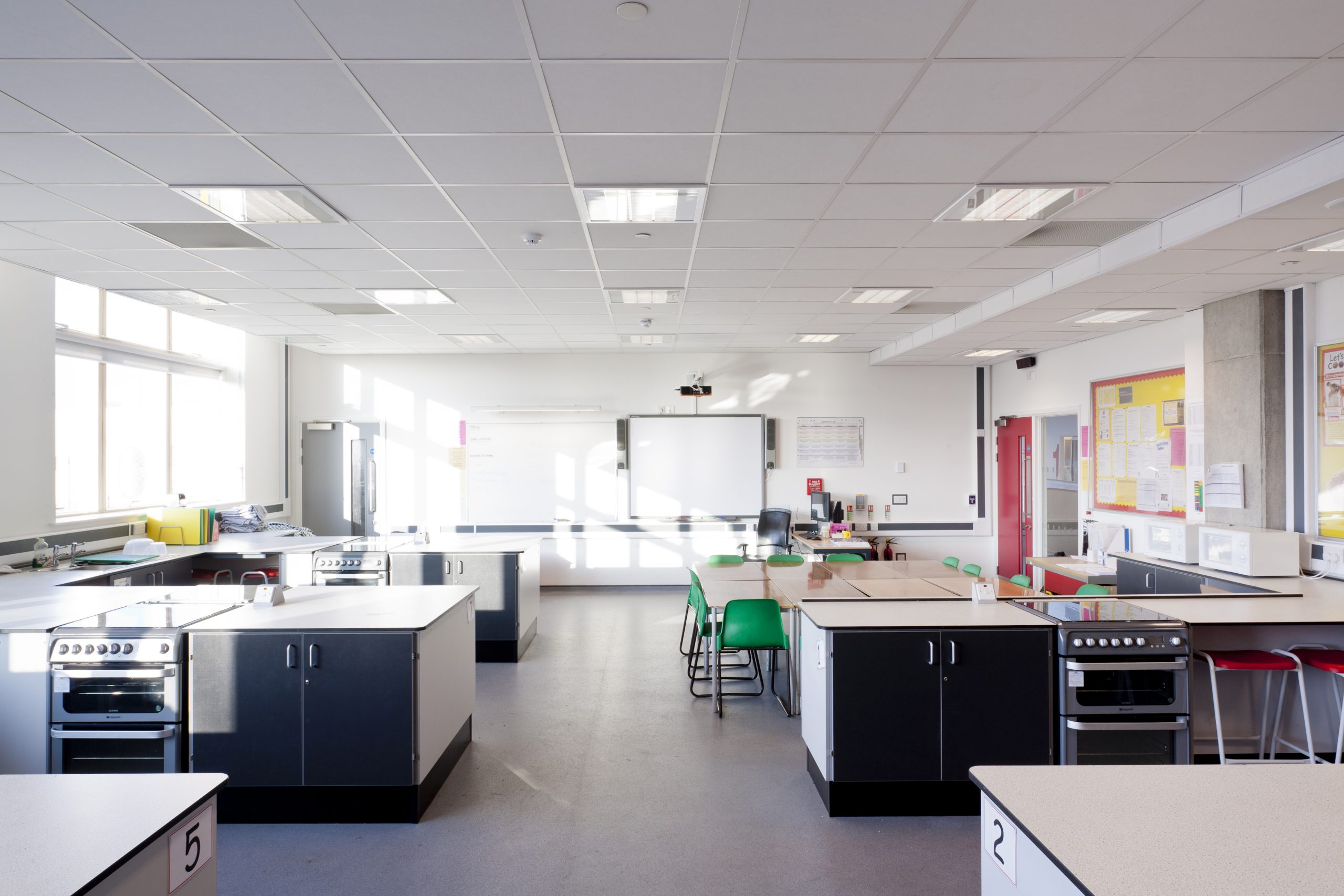Light, sight and sound – the keys to ideal learning environment
Education has never been higher on the national agenda, and steps are being taken to improve access, outcomes and opportunities for children across the UK

Education has never been higher on the national agenda, and steps are being taken to improve access, outcomes and opportunities for children across the UK. Naturally, the focus is on resources and teaching quality. But the immediate environment also has an important role to play in helping children learn. Here Roy Gleiwitz, regional sales manager for Zentia – formerly Armstrong Ceiling Solutions – looks at how ceilings can help.
We all know the importance of a formal education, so we owe it to children and young people to ensure the best possible support. While the quality of teaching and resources are clearly the most critical aspects, the learning environment plays a big part too. This is captured in the notion of building wellness, which seeks to create optimal conditions through design and construction.
In education, one of the best ways to do this is to ensure that pupils can hear clearly and see properly. This means paying attention to noise and light, and here the choice of ceilings can be a big factor.
Schools are noisy places, and the students actually account for most of it (40% of the total according to some studies). Other sources of background noise include kitchens, grounds maintenance, road traffic and even airplanes, especially when windows are open. All of which means that most schools routinely exceed the recommended noise levels of 35dB set by the World Health Organisation.
A high level of noise can have serious consequences. It can increase blood pressure, affect nervous systems and potentially lead to mental health issues. Sustained exposure to anything above 65dB increases the risk of myocardial infarction significantly, and there’s evidence that factors such as these might be affecting the life expectancy of teachers.
Equally, even relatively low levels of noise – or poorly designed acoustic spaces – can force teachers to speak louder, straining their voices and affecting enunciation. At the very least, it can hinder concentration or the ability to hear and learn. And in a post-pandemic world, when classrooms may need to increase in size to give individual students more room to social distance, volume control could be even more compromised.
Schools don’t always present the best acoustic environments, with reverberation a major culprit.
The harder the surface, the stronger the reverberation, and schools are full of hard surfaces, including walls and whiteboards. For teaching, an ideal reverberation time (essentially, how long it takes for the sound to become inaudible) would be 0.4–0.7 seconds. The surest way to achieve this is to introduce sound absorbing material such as acoustic ceiling tiles which can help create the optimal conditions.
For example, in a recent project, Zentia supplied ceiling tiles to a new build and renovation project at Mill Hill School, Derbyshire. This project complied with Building Bulletin 93, which stipulates low ambient noise levels and high levels of sound insulation. Ceiling tiles were specified with a reverberation time of 0.6 seconds in a typical 200m3 classroom.
These solutions can be customised to each space. So, while assembly areas and classrooms need sound to carry clearly, libraries and study areas need a different approach. Equally corridors, inevitably the source of high noise levels, should be designed to minimise sound as much noise as possible.
Light is another key factor in learning environments. It’s well known that light affects mood, reduces stress, and aids reading and comprehension. For example, a study by Randall Fielding found that naturally lit classrooms increase students’ scores by 20% (maths) and 20% (verbal). Many ceiling tiles have excellent reflective properties that can work with natural light to create ideal learning environments.
Finally, there’s the question of volatile organic compounds (VOCs). Given off by certain building materials, these compounds include many toxins or allergens which can be detrimental to human health. Specifying low or no-VOC ceiling tiles can therefore contribute to a safer and healthier learning space.
Clearly, there are many factors impacting on a pupil’s ability to learn and develop. But for those elements within the control of specifiers and contractors – essentially all the key design decisions – it’s important to specify solutions which optimise conditions and enhance the experience of students and teachers.